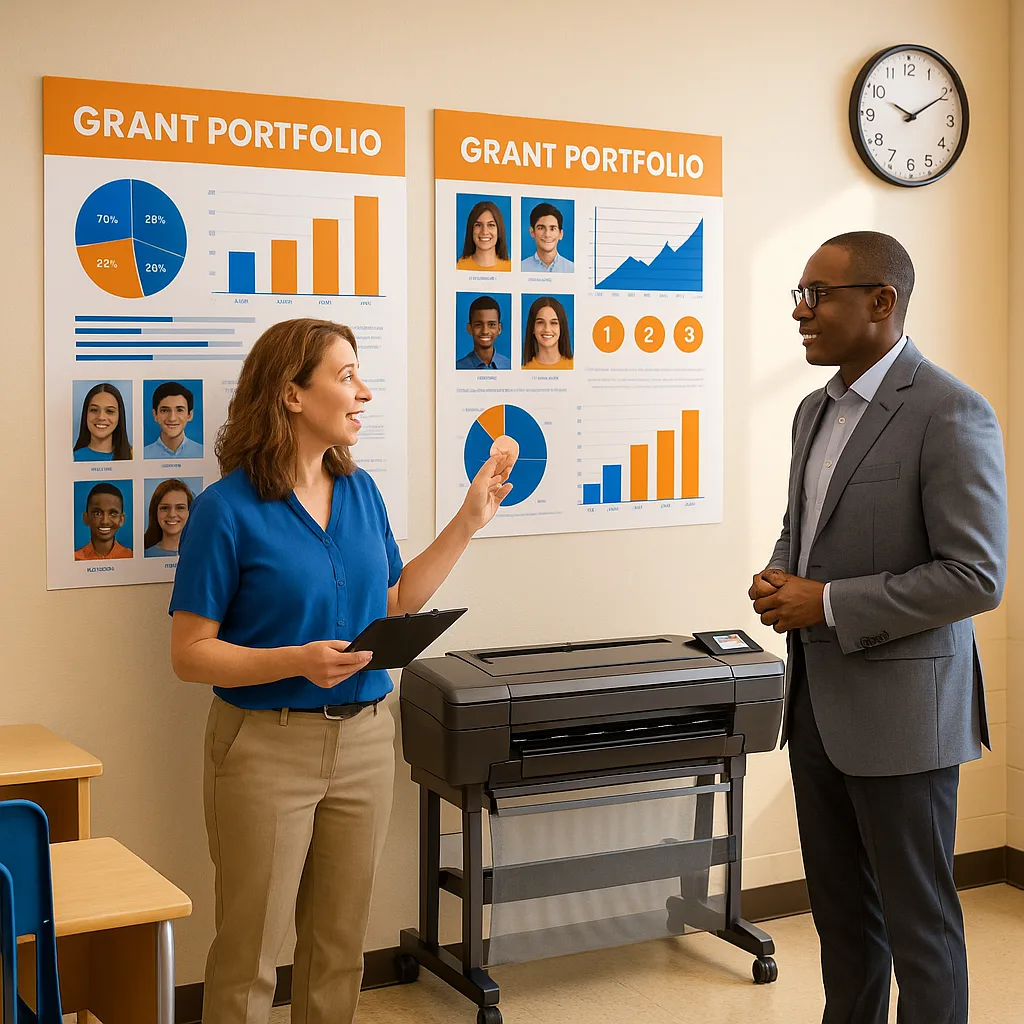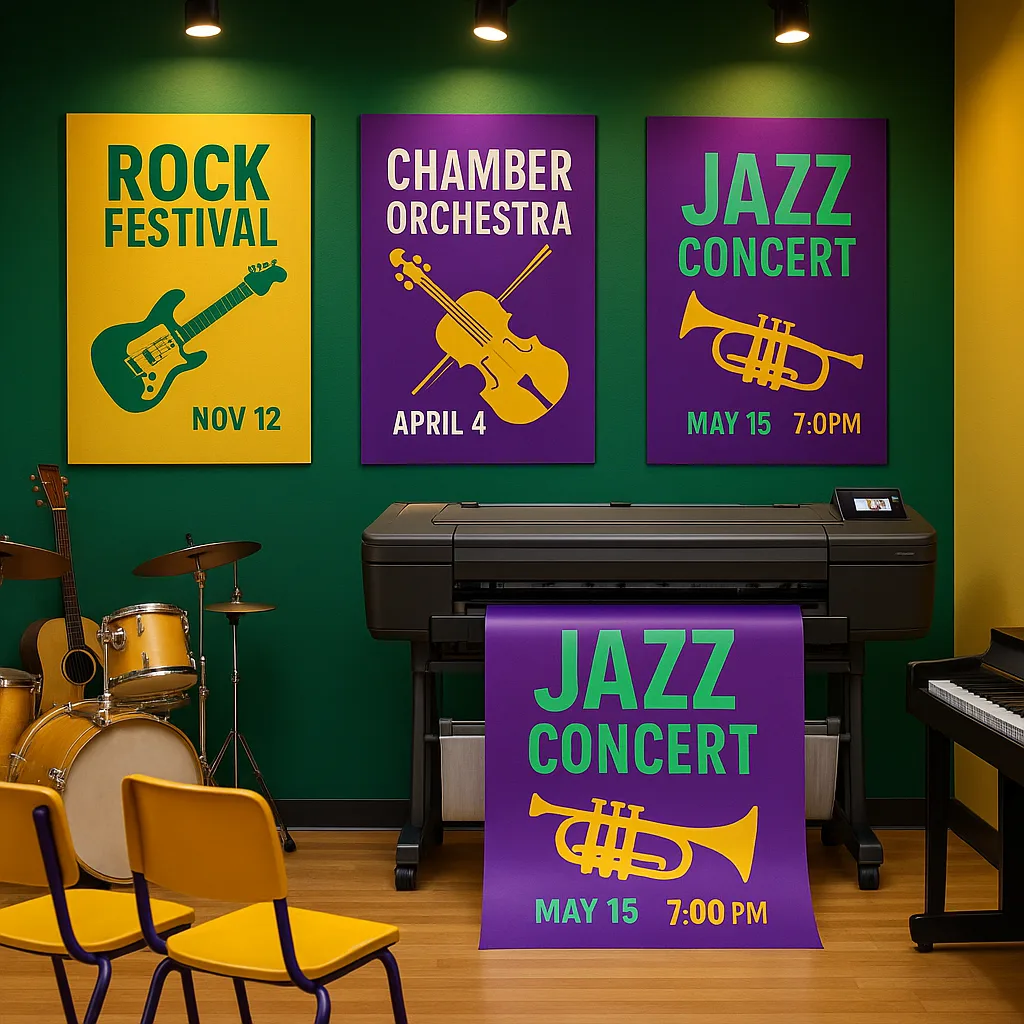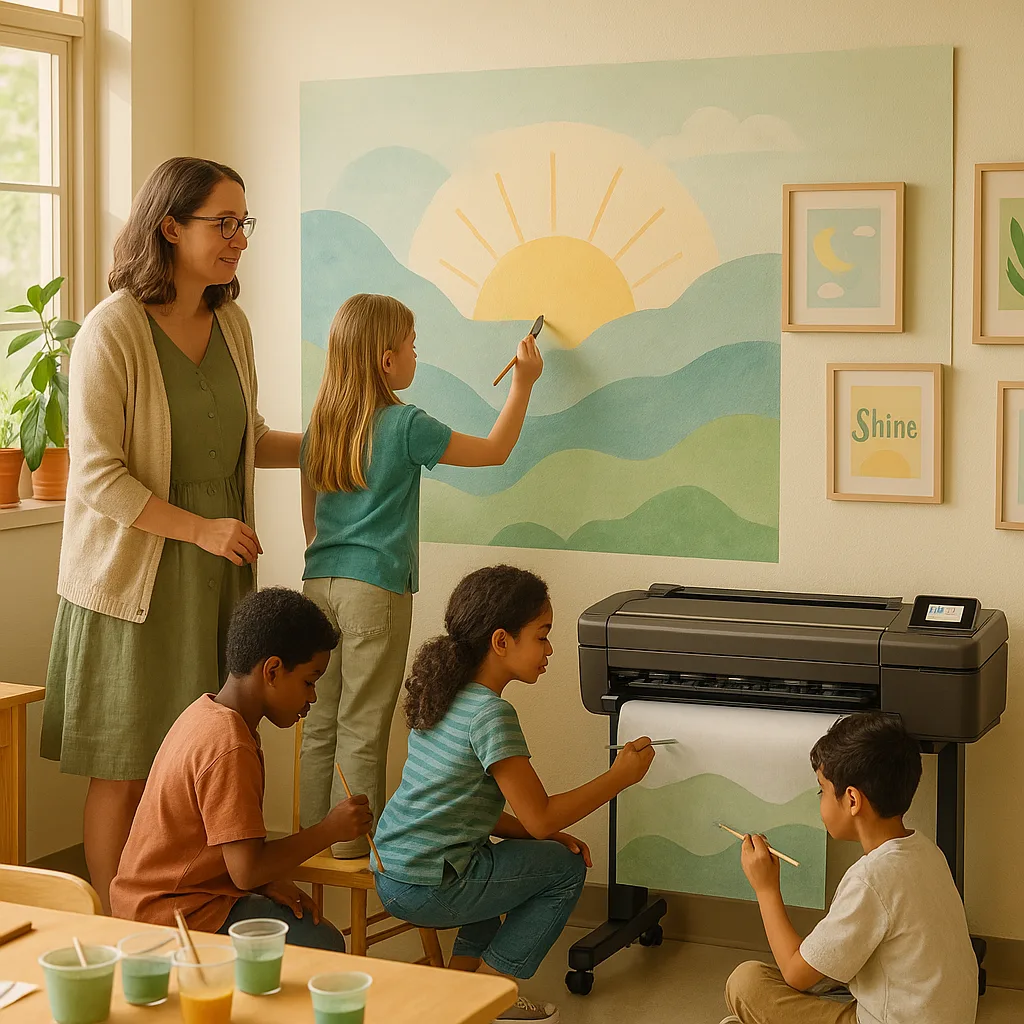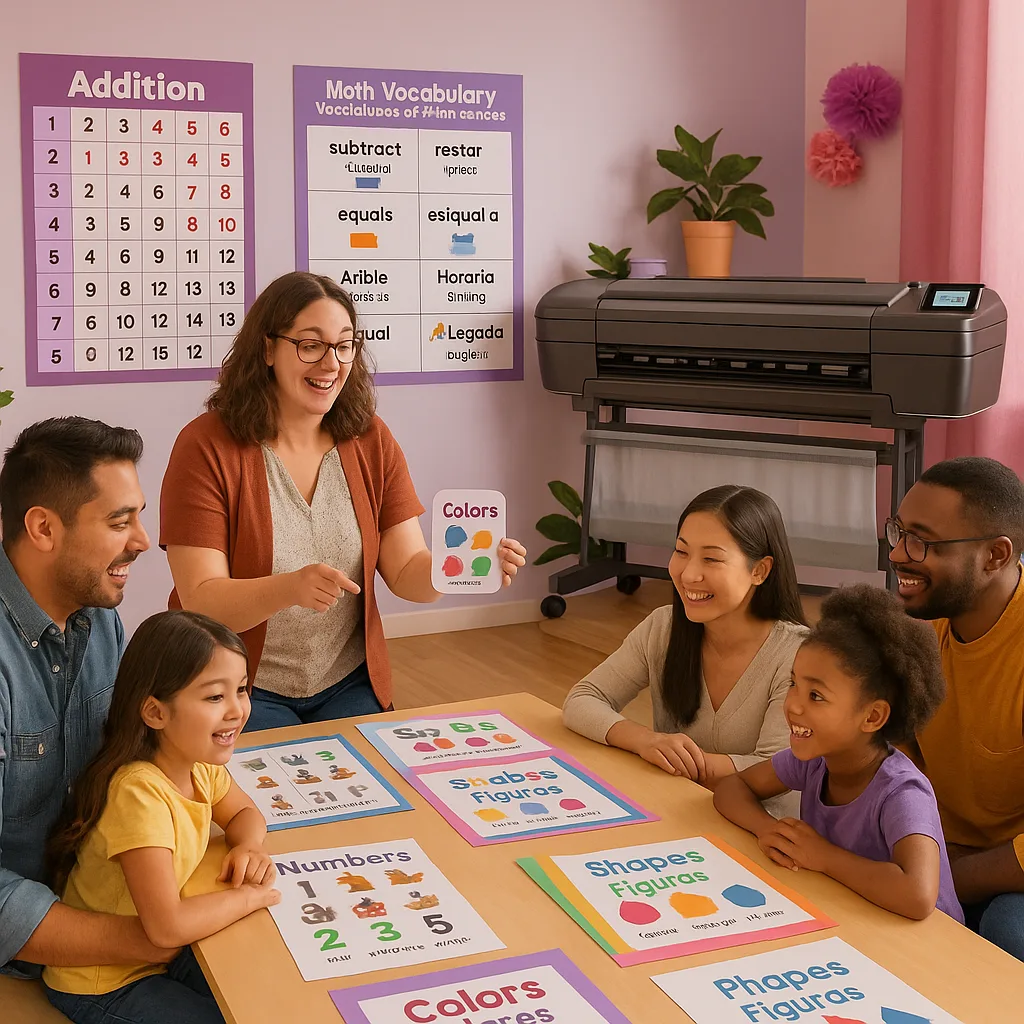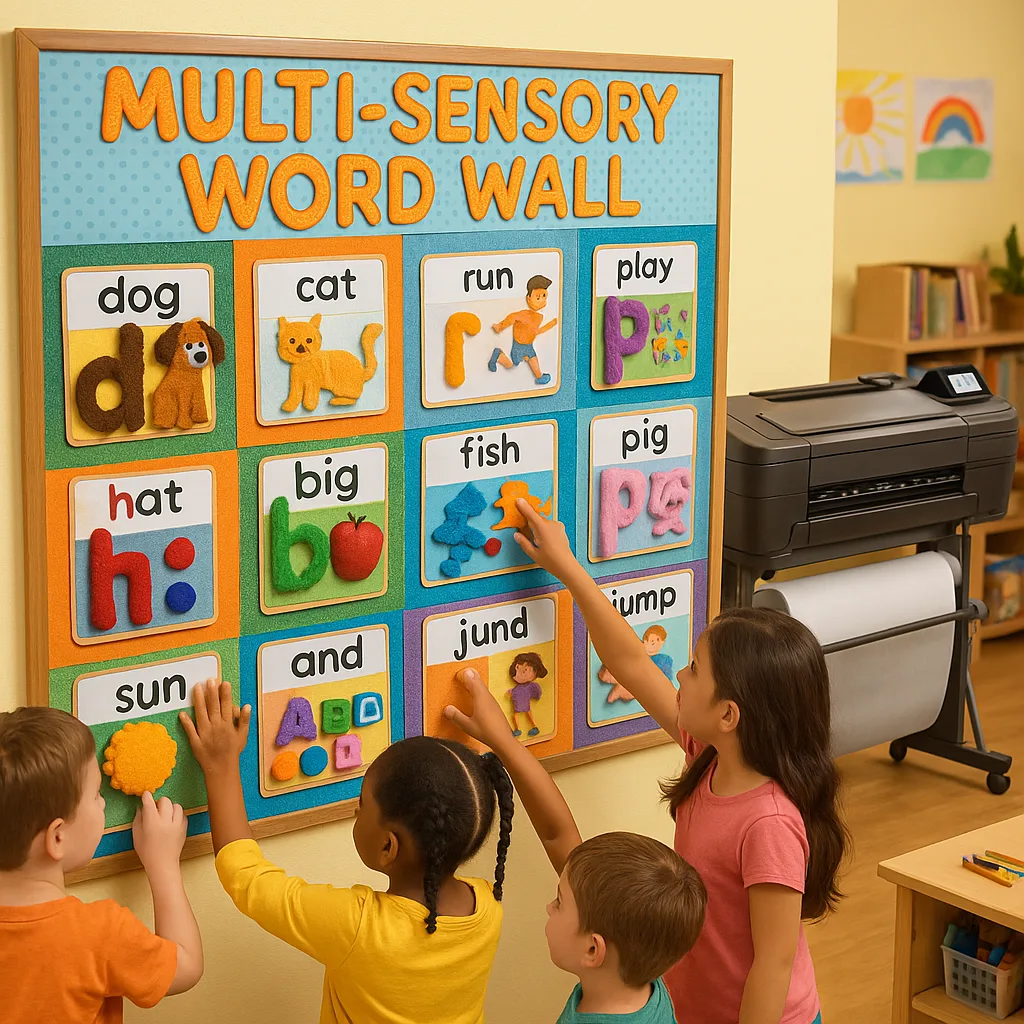
Walk into any vibrant classroom, and you’ll likely spot colorful word walls adorning the space. However, creating truly effective vocabulary displays requires more than just posting words on paper. When we embrace poster printing for teachers word walls, we open doors to multi-sensory learning experiences that reach every student, regardless of their learning style or language background.
Research-Backed Strategies for Multi-Sensory Word Walls
Educational neuroscience reveals that combining visual, tactile, and kinesthetic elements significantly enhances vocabulary retention. According to research from the International Dyslexia Association, students with dyslexia benefit from multi-sensory approaches that engage multiple brain pathways simultaneously. Similarly, English Language Learners (ELLs) show improved comprehension when vocabulary instruction incorporates visual supports and hands-on manipulation.
Furthermore, the National Reading Panel emphasizes that effective vocabulary instruction must be both explicit and engaging. Traditional word walls often fall short because they remain static displays. Instead, when we leverage modern poster printing for teachers, we can create dynamic learning tools that students actively interact with daily.
Most importantly, research from the Journal of Learning Disabilities shows that students who engage with vocabulary through multiple senses demonstrate 40% better retention rates compared to traditional memorization methods. This finding underscores why investing in quality printing solutions matters for educational outcomes.

Designing Word Walls That Engage Every Sense
Creating multi-sensory word walls begins with thoughtful design choices. First, consider color coding systems that help students categorize vocabulary by parts of speech, theme, or difficulty level. Next, incorporate textured elements using materials like sandpaper letters or fabric borders that students can touch while learning new words.
Additionally, size variation plays a crucial role in capturing attention. Large-format posters created with the Education Express 36 Poster Printer allow for bold, clear text that’s visible from any classroom corner. This visibility ensures all students, including those with visual processing challenges, can easily access vocabulary resources.
Moreover, incorporating movement into word wall activities transforms passive displays into kinesthetic learning opportunities. Consider creating removable word cards that students can physically manipulate, sort, and reorganize. This hands-on approach particularly benefits students with ADHD who need movement to maintain focus.
Essential Elements for Poster Printing for Teachers Word Walls
When selecting the best poster printer for schools, several features ensure optimal word wall creation. Print quality stands paramount, as crisp text and vibrant colors enhance readability for all learners. The ability to print on various materials, from standard paper to more durable options, provides flexibility for different classroom needs.
Cost-effectiveness also matters significantly. Schools operating with the most affordable printing solutions can create more frequent vocabulary updates without straining budgets. This financial efficiency allows teachers to refresh word walls seasonally or align them with current curriculum units.
Durability considerations guide material choices too. While paper posters work well for temporary displays, laminated versions withstand daily student interaction. The PSE Cool 25″ Cold Laminator provides an excellent solution for protecting word wall materials without heat damage, ensuring longevity for frequently-used vocabulary resources.
Furthermore, wireless printing capabilities streamline the creation process. Teachers can design word wall elements on any device and send them directly to their classroom printer. This convenience encourages more frequent updates and personalization based on student needs.
Better retention with multi-sensory vocabulary instruction
Interactive Templates for Every Learning Style
Visual Learners
Picture-word associations with vibrant imageryTactile Learners
Textured surfaces for hands-on explorationKinesthetic Learners
Movement-based vocabulary activitiesLamination Techniques for Durable Interactive Displays
Protecting your word wall investments ensures years of classroom use. Cold lamination offers the safest option for preserving colorful prints without heat damage or warping. This method works particularly well for materials created through poster printing for teachers, maintaining vibrant colors and sharp text clarity.
Hot lamination provides another durable option for smaller word cards and manipulatives. However, temperature control remains crucial to prevent bubbling or discoloration. For best results, test lamination settings with sample prints before processing entire word wall sets.
Self-adhesive laminating sheets offer flexibility for oddly-shaped materials or three-dimensional elements. These sheets work well for creating textured surfaces while maintaining protective coverage. Additionally, they allow teachers to laminate materials without special equipment, though the per-sheet cost typically exceeds roll lamination options.
Supporting Diverse Learners Through Design
English Language Learners benefit from word walls incorporating native language translations alongside English vocabulary. Creating bilingual displays using proven printing solutions helps bridge language gaps while honoring students’ home languages. Include pronunciation guides and cognate connections to deepen understanding.
Students with dyslexia require specific design considerations. Use sans-serif fonts like Arial or Comic Sans, which research shows improve readability for dyslexic readers. Increase spacing between letters and words, and avoid italics or all-caps text. Color overlays or tinted backgrounds can reduce visual stress for some students.
Additionally, consider students with attention challenges when designing word walls. Create clear sections with distinct boundaries to prevent visual overwhelm. Use consistent color coding systems that help students quickly locate needed vocabulary. Rotate displays regularly to maintain novelty and engagement.
For students with visual impairments, ensure high contrast between text and backgrounds. The best poster printer for schools should produce deep blacks and vibrant colors that maximize visibility. Consider adding braille labels or QR codes linking to audio pronunciations for comprehensive accessibility.
Printable Template Ideas
Word Family Trees: Create branching diagrams showing related vocabulary. Students add leaves with new words as they discover connections.
Vocabulary Puzzle Pieces: Design interlocking pieces that students match to build complete definitions or synonyms.
Interactive Pocket Charts: Print pockets for sorting activities where students categorize words by various attributes.
Word Webs: Circular designs allowing students to connect central concepts with related vocabulary through visual mapping.
Flip Books: Multi-layered displays revealing definitions, examples, and illustrations as students interact with each layer.
Implementation Schedule
Week 1: Introduce base word wall structure with core vocabulary.
Week 2: Add interactive elements like removable cards and texture samples.
Week 3: Incorporate student-created additions using classroom printer.
Week 4: Rotate displays to maintain engagement and assess retention.
Monthly: Update themes aligning with curriculum units using fresh prints from your poster printing for teachers system.
Transform Your Classroom Today
Ready to revolutionize vocabulary learning in your classroom? Discover how the right printing solution can make multi-sensory word walls a reality.
Join over 4,200 schools creating engaging learning environments with Poster Studio Express


